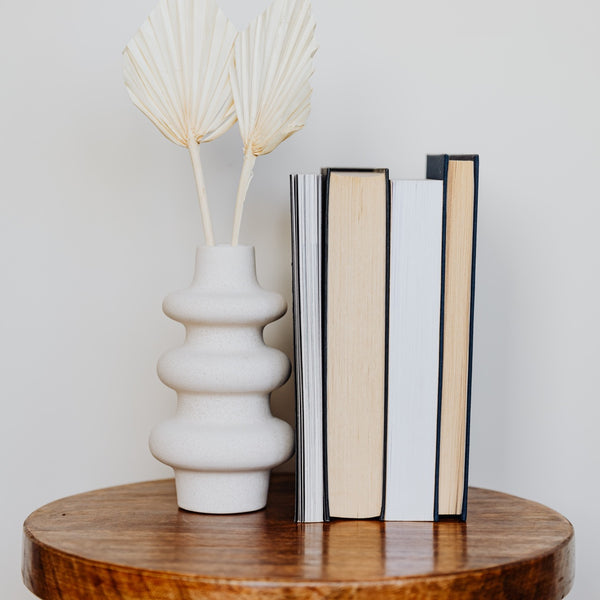Writing & Gratitude: The Joy of Giving Thanks

“Incorporating gratitude practices helps to bring hope, energy and healing as we experience emotions such as grief, fear, anxiety and negativity.” – Babita Spinelli
Usually, when November rolls around, thoughts of giving thanks permeate the collective consciousness. Gratitude, “helps reduce anxiety and stay grounded during uncertain and challenging times. During Covid and otherwise,” explains Licensed Psychotherapist and Certified Relationship Coach, Babita Spinelli. The practice of gratitude helps create internal shifts of awareness, centered around optimism; when you focus on the positive, “It helps you move from a micro level of internal negative thoughts to a more macro level of what is still good,” says Spinelli. Instead of feeling out of control in your life, being thankful is empowering because,“It helps move your experience of feeling like a victim to feeling like you have more control,” adds Spinelli.

One way to bring more appreciation into your life is through the power of the pen. A research study performed at Kent State University, explored how writing letters of gratitude could potentially impact students lives. In the study, students served as subjects, and were asked to write bi-monthly letters that were thoughtful and displayed feelings of gratitude. The result? After sending off each letter, students felt increasingly happy. Overall, researchers discovered the process of expressing thanks in letter writing was a positive experience that intensified joy and a sense of wellbeing.
Letters & Emails

This can be done with pen and paper, and mailed old school, or else as emails. Both ways have benefits. Writing on paper is a tactile experience and allows you the sensory benefits of feeling paper against skin, and the rewards of folding, and physically stamping and sending off into a mailbox. The nice thing about sending an email is immediacy. With the tap of your fingertip, your words are propelled to the person of your choice. It can feel like manifesting a desire. Approach your letter or email, in the same spirit as the Kent State study; take time, thinking over what you want to say. Be mindful to frame your words in a positive light. Tell the person how they have enhanced your life for the better, and express heartfelt appreciation, without expecting anything in return. Release judgement of both your words and how they will be received. Also, keep it to a maximum of one page. Simply write and send. Afterward, notice how you feel, and if you are so inclined, write down how the letter-writing has affected you.
Daily Gratitude Journal

Another means of linking writing and gratitude is through keeping a regular gratitude journal. Spinelli says, “the practice has helped clients look beyond the pain of the moment and look at life in a bigger, broader way.” Writing, and then later using the journal for reflection works different areas of your brain too. “Clients have shared that writing in a gratitude journal has made them feel more clear about what makes them happy, which is important when life is filled with uncertainty especially during this emotionally trying time.” Says Spinelli.
Let yourself be creative with the process since there isn't one correct method. When Spinelli gives a gratitude journal as homework to clients, she advises: “Pick a notebook you find pleasing to the eye. Write at least one instance of gratitude each day before bed and keep this journal at your bedside. Each morning read what you wrote the night before and start your day keeping those positives in mind.” Allow for the thankfulness to grow over time. Spinelli suggests,“each week, move from one instance to two and so on.”
Gratitude Jar

The gratitude jar reinforces appreciation on different levels, and also ingrains it as a habit. First, choose a large jar with a cover. Mason jars work nicely. Then, cut up colored paper into about 6 inch long strips, at least an inch wide, so there's ample space to write. Over the space of 6-8 weeks, each morning, allow for quiet reflection, and write at least one thing you are thankful for, and a maximum of 3. Each one with its own strip of paper. Take a few moments to focus on what you write as you breathe deeply. Then fold up the paper and put it in the jar. During the 6-8 weeks, resist the urge to read any of the papers, just continue thinking and writing in this way. And throughout each day, allow your mind to reflect back on what you wrote. After the 6-8 week period, change up the process. Each morning, choose one strip of paper from the jar, read, and allow it to permeate your thoughts for the day. If you wish, carry the strip in your pocket, to read as desired.
While it may sound simplistic, increasing gratitude takes ongoing effort. And is more natural for some than others, especially if you have previously “experienced abandonment or trauma,” says Spinelli, explaining how it can be uncomfortable to trust that positive feelings are sustainable; holding onto the familiar can feel safer rather than risking the unknown. Another form of resistance Spinelli mentions can come from the belief that gratitude turns a blind eye to the negative, or completely denies its existence. That's not what gratitude practice is about. Spinelli emphasizes that you can “hold space for both feelings. Acknowledge what you are grateful for, at the same time recognize that times are difficult.”
Ultimately, gratitude is crucial as a mindfulness practice, especially when times are tough and negativity permeates the media. According to Spinelli, “If you don't use this heart muscle and keep it shut or wall yourself off from appreciating your gifts, you are in danger of staying stuck in what is negative, which greatly impacts mental health and physical well-being.” The beautiful thing about appreciation is, it can blossom in seemingly ordinary ways. For instance, Spinelli suggests at the end of each day, take note of a couple of things you're thankful for, “This can be as simple as the pleasure of your first sip of hot coffee in the morning, or feeling grateful about a family member who gave you comfort.”



